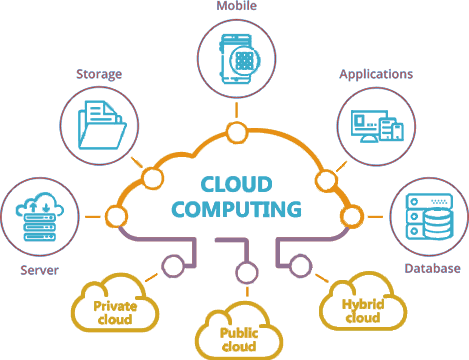A network architecture approach that enables the network to be controlled or programmed using the software applications intelligently is called Software-defined networking. This approach allows the operators to manage the whole network in a more consistent and holistic manner, irrespective of the network technology that has already been used.
In order to keep up with the growing competition between the carriers, service providers, and enterprises, many of them are turning to Software-defined networking (SDN) technologies to bring revolution in the field of network design and operations. The traditional business models are having a tough time after the consistent growth in multimedia content, the impact of the increase in mobile usage on people’s lives, the explosive growth in cloud computing, etc.
SDN makes the use of open APIs which enables the network programming behavior in a manner that is centrally controlled through the software. We can achieve this by opening up the network platforms that were traditionally closed as well as a common SDN layer can be implemented. By doing this, the operators can manage the entire devices on that network continuously, irrespective of how complex the underlying network technology might be.
The four area where SDN technology can bring a change for an organization are:
- Programmability of the network
- Abstraction of the network
- New era of openness
- Network abstraction
Role of SDN in edge computing, IoT and remote access:

By using a properly configured SDN environment ventures like placing the data center functions to and from the edge, distribution of computing power to the remote sites, adopting cloud computing, supporting the internet of things (IoT), etc. will make these efforts easier and more cost-effective.
Usually, in an SDN environment, the customers are allowed to see all of their TCP flows and devices because the network from the data or management plane can be sliced up so that they can support a variety of applications and configurations.
There are SDN controllers available that are programmed to check whether the network is getting crowded so that in response it can increase the processing or the bandwidth to make sure edge and remote components don’t encounter latency.
Role of SDN in intent–based networking:
Intent-based networking (IBN) is about a variety of components but most importantly it allows the network administrators to program what the functions of their network are going to be, which makes the network platform automated so the network management platform can create its desired state and implement the policies to make sure whatever the business needs can happen.
IBN showcases the uprising of SDN to achieve even greater degrees of simplicity in operations, automated intelligence, and closed-loop functionality.
Role of SDN in customers with security:
Software-defined networking provides a bunch of security benefits where a customer can divide the network connection between the data center and an end-user where they can have different security settings for every type of network traffic. There might be one public network having low security that doesn’t consist of any sensitive information. The other network could have more incompressible control having remote access with a firewall that is software-based having encryption policies on it through which sensitive data can traverse.

If the data is distributed then SDN can be of great benefit as it is able to look at a set of work and check if it matches a given security policy. Microsegmentation can also be supported by the growing number of SDN platforms.
SDN’s role in cloud computing:
A cloud service provider often wants to ensure that customers can move their workloads present virtually without requiring much planning and SDn can play an important role in it. SDN helps the cloud service providers to host millions of networks virtually without finding the need for VLAN or other common separation isolation methods. Software-defined networking also reduces the complexities that are often observed in day to day’s network. SDN virtualizes the physical network connectivity into logical network connectivity thereby enabling network administrators to manage network services via a central management tool.

Some specific benefits of Software defined network for Cloud Computing are as follows:
- Reduced cost: A company or a firm does not necessarily require a huge investment for software-defined networking. Even several SDN products are available for free to use so no need to buy any expensive networking services.
- Intelligent and globally connected networks: We can create very intelligent global networks using SDN and at the same time help with balancing the load on the cloud and datacenter infrastructure. SDN sends the traffic to data centers based on network logic thereby providing global traffic management. Also, in the future SDN will allow the developers to create even more fluid automation for the traffic flow of data centers. This will help in reducing the downtime, data flexibility increases, and recovery from the disaster becomes more effective.
- Comminuted security: The SDN controller is the central point of control that transfers the security and policy information throughout the enterprise present over a network.
- Downtime is reduced: SDN makes it easier to perform an upgrade for a single piece rather than upgrading all the physical devices present over a network. In that way SDN helps in the virtualization of most of the physical devices.
Future for Software-defined networking:
- Building block for 5G: It is quite obvious that 5G is going to totally rely on SDN in the future. By doing this, 5G along with the open-source networks will become one of the best combos for the telecom industry all across the world. Businesses can have a secure platform and the connectivity issues will also get reduced using 5G. This will also improve customer experience on all the platforms.
- In the manufacturing sector: In order to continue the smooth operations in the company, every supplier, distributor and manufacturer need to be connected with each other in coordination. In order to achieve this manufacturing plant should be well equipped with sensors, IoT devices, and other technical devices. If they are connected over a 5G network, the issue of equipping sensors in the manufacturing plants could be resolved.
